- Motorcycles
- Car of the Month
- Destinations
- Men’s Fashion
- Watch Collector
- Art & Collectibles
- Vacation Homes
- Celebrity Homes
- New Construction
- Home Design
- Electronics
- Fine Dining
- Baja Bay Club
- Costa Palmas
- Fairmont Doha
- Four Seasons Private Residences Dominican Republic at Tropicalia
- Reynolds Lake Oconee
- Scott Dunn Travel
- Wilson Audio
- 672 Wine Club
- Sports & Leisure
- Health & Wellness
- Best of the Best
- The Ultimate Gift Guide

This Fuel-Sipping Superyacht Can Travel More Than 6,000 Miles Between Fill-Ups
Feadship's new vitruvius-designed 190-foot najiba sets a new standard for superyacht efficiency., howard walker, howard walker's most recent stories.
- This 1967 Shelby GT500 Has Been Reimagined to Perfection. Now It’s up for Grabs.
- One of Ferrari’s Earliest Formula 1 Cars Is Now Up for Grabs
- Aston Martin Unveils Its Fastest Vantage Road Car Ever. Here’s What We Know.
- Share This Article

Think of it as the Prius of the seas. Najiba , the newly completed, 190-foot all-aluminum superyacht built by Dutch craftsmen at Feadship from a Vitruvius Yachts design, sips fuel like the hybrid Toyota. Well, almost.
During recent sea trials, Najiba reportedly delivered a truly astonishing fuel consumption best of just three gallons per nautical mile at its 12-knot cruising speed. That’s despite this sleek and slender motor yacht tipping the scales at 880 tons and having a couple of muscly 1,448 hp MTU 12-cylinder diesels providing the power.
- This New Camper Shell Lets You Sleep on the Roof of Your Rivian
- 25 Fascinating Facts You Didn’t Know About Bugatti
- This New 131-Foot Aluminum Catamaran Concept Can Take on a Transoceanic Expedition
The secret, it seems, is down to the highly efficient hull design—that, and a single-minded focus on making the yacht slice through water like a hot knife through butter with minimal resistance.
The creative force behind Vitruvius , ace French designer Philippe Briand —one of his many fortes is drawing super-fast racing sailboats —penned the lines of Najiba’s lightweight alloy hull. He gave the yacht a wave-piercing plumb bow and maximum waterline, and closely worked with Feadship to reduce the effect of appendages like the propeller shafts, stabilizers and thrusters.
The real-world results that came out of the extensive sea trails included an increased top speed—from the original goal of 16 knots to 17—and a cruising-speed range of more than 6,000 nautical miles compared to the projected 5,000 miles. That’s Antibes to Miami with fuel to spare in the yacht’s 23,757-gallon fuel tanks.
The choice of using lightweight aluminum was also a major factor in increasing the yacht’s efficiency. The entire hull and superstructure were built using the alloy, while the yacht’s design called for a sleek, lower-than-usual wheelhouse to reduce wind resistance at speed.
“These results mean that despite the complexity of her development and build, we have outperformed all expectations with Najiba ,” explained Roderick de Vries, technical director of the Feadship yard in Aalsmeer, southwest of Amsterdam.

The entire hull and superstructure were built using lightweight aluminum. Photo: Courtesy of Feadship
“It was a real ‘wow’ moment for everyone involved to see this level of efficiency achieved during sea trials. It is one thing to design such an efficient full-displacement motor yacht, but another to translate these lines and shapes into a stunning Feadship that is even faster and more fuel-efficient than we projected.”

Najiba is the fifth Vitruvius-designed yacht. Photo: Courtesy of Feadship
Right now Najiba , which means “noble,” is with its new owner on a maiden voyage to Bergen in Norway. Chances are he won’t be looking to fill up any time soon.
Read More On:
- Philippe Briand
More Marine

This New 150-Foot Superyacht Can Cruise Through Shallow Waters in Florida and the Bahamas With Ease

Open Space, Eco-Friendly Tech: What a Rising Class of Millennial Superyacht Owners Is Looking For

‘People Don’t Want to Be Inside’: How the Outdoors Became Yachtmakers’ Most Coveted Design Element

This New 220-Foot Custom Superyacht Is Topped With an Epic Jacuzzi

Culinary Masters 2024
MAY 17 - 19 Join us for extraordinary meals from the nation’s brightest culinary minds.
Give the Gift of Luxury
Latest Galleries in Marine

Palm Beach Vitruvius in Photos

The 10 Most-Exciting Yacht Debuts at the Palm Beach International Boat Show
More from our brands, lvmh shuffles top executives as bernard arnault sharpens succession plan, sportico transactions: moves and mergers roundup for march 15, remi wolf announces sophomore album ‘big ideas,’ drops new single ‘cinderella’, promotions for beyoncé’s ‘cowboy carter’ album projected on major new york museums, this folding treadmill is 20% off for amazon’s big spring sale.

Do you operate a yacht? Our app is perfect for you
Yacht fuel cost calculator - how to estimate the costs.
Yacht captains have many responsibilities when it comes to the management of their vessel. One of them is keeping track of expenses, which is why it is important to familiarize yourself with the vessel’s operational costs. Keeping a luxury superyacht afloat isn’t cheap, and many claim that the average annual cost ranks up to 10% of the vessel’s price.
From these expenses, a significant portion goes to fuel. Filling up the tank of your boat is quite pricey, which is why a growing number of boat owners want to know exactly how much they are looking to spend for their upcoming voyage. This is also important for people who want to charter a boat for their holiday.
If you’re wondering how to best estimate the costs involved, you’re in the right place. This article will help you calculate your vessel’s yacht fuel cost while giving an overview of all the criteria used as variables. To make the process even easier, we link to a yacht fuel cost calculator to help you get an indication of the expenses you’ll need to cover. Let’s delve in!
Yacht fuel cost calculator
How to estimate yacht fuel costs, how much fuel does a yacht use.
- Price of boat fuel per gallon?
Yacht fuel formula
The easiest way to calculate your fuel costs is by using a yacht fuel cost calculator. There is a great calculator available here in case you want to save time and get an approximate estimation.

As you can see, the yacht fuel cost calculator has many variables which you need to be aware of before you set out to calculate the approximate price. This is what we will be dealing with in the next few chapters.
To help you get a better understanding of the calculation process we will do things manually while giving you the exact formulas used to calculate your vessel’s fuel needs. Therefore, make sure you keep on reading.
There are several things you need to keep in mind when you first set out to estimate the total fuel cost for your next voyage. These are summarised in the following points:
- Distance of journey - The total amount of nautical miles (or km)
- Cruising speed - The (average) speed of your vessel (in knots or km/hr)
- Fuel consumption - Understanding how many gallons (or liters) of fuel are consumed per hour
- Yacht fuel price - Understanding the average market price per gallon of fuel
The first two points depend solely on your needs and personal preference, which means that they are more flexible on a subjective basis. The latter two points may require a bit of research, especially if you’re not familiar with the engine of the vessel.
In the following sections, we will delve deeper into each of the points mentioned above, and offer the required formulas to help you calculate yacht fuel cost.
Calculating distance and speed
To understand the exact distance you are looking to cover in your next voyage, you can simply use Google Maps to plan your route. The following video explains the process in detail.
As soon as your route is planned out, you can measure the distance as well, selecting the preferred method of calculation. In our case, it is best to measure in nautical miles (1nm=1,85km), as this metric is more commonly used among sea men. The yacht fuel cost calculator above has an embedded map that helps you pinpoint the journey you want to make.
Next comes the cruising speed. The number is mostly calculated in knots (nautical miles/hr). The speed with which the vessel will cruise depends on the captain onboard, but is often influenced by the owner and guests onboard. You can make a rough estimation of this number based on previous trips.
Next, we need to calculate the amount of fuel that you will likely need. To do this we need to understand the engine type, its horsepower, and several other factors.
Let’s take a marine diesel engine for example. These engines are very common on motor yachts and consume approximately 0.4 pounds of fuel per hour for each unit of horsepower. You can find fuel consumption info for your specific engine by looking it up on the web or by calling the service number.
Once you know the fuel burn rate, it’s best to add a relative error margin of 10% based on minor factors. These include weather conditions, vessel size, and drag, all of which can increase the fuel burn.
How much fuel does a yacht use per hour?
Now that you know all the variables you can go ahead and calculate the amount of fuel that your yacht will need.
- Start by calculating the fuel burn per hour based on the horsepower of the engine.
- Add a multiplier based on the cruising speed of your vessel.
A vessel with a diesel engine of 300 horsepower will most likely burn 16-17 gallons per hour, which you can then use as a guideline when calculating the travel time based on the nautical miles you are looking to cover.
Superyachts are consuming much more fuel. An average 70-meter luxury yacht will burn around 130 gallons per hour with the engines running, while the amount increases significantly when the ship is moving. On average, you are looking at ±€2000 per hour (±1000 gallons) to achieve a speed of 20 knots. Of course, the higher the cruising speed, the more fuel you will be burning per hour, which in turn makes each hour at sea more expensive.
How much does boat fuel cost per gallon?

The exact price you are looking to pay per gallon depends on the marina you find yourself in. By looking at several price points of marinas, we get the following:
- Average diesel prices range from $3.2-$3.9 per gallon
- Average petrol prices range from $7.2-$7.8 per gallon
Note that discounts usually apply whenever you choose to purchase large quantities of fuel.
Why is boat fuel so expensive?
Marine fuel pricing is heavily inflated due to low supply and high demand. In short, the limited number of fuel stations at marinas have to service all the yachts that dock, which leads to a no-choice monopoly.
That said, yacht owners are usually not that concerned about the small price spike that marinas charge as an extra. If anything, they are happy to pay due to the convenience of the service.
How much fuel does a yacht hold?
Once again, the answer to this question depends on the size of the vessel. Smaller yachts can hold around 1300 gallons of fuel, while the bigger vessels can store up to 100,000 gallons. The ship’s engineers should be able to provide this number for the vessel you command.
Now that we have a better understanding of all the variables that determine the cost of fuel, we can go ahead and take you through the calculation process step by step.
First, know the total duration of your cruise. To obtain this information, divide the number of nautical miles by the cruising speed of your vessel (knots). For example, if you want to make a journey that totals 150 nautical miles while traveling at 20 knots, the yacht fuel formula looks as follows:
Total duration = 150 nm / 20kn
Total duration = 7,5 hrs
Note that the amount of fuel consumption may end up higher than expected if:
- Sea and weather conditions are not favourable
- You plan to make short stops along the way while the engine keeps running
Next, what you want to do multiply the number of hours by the number of gallons that your engine burns on an hourly basis while moving at the speed you previously indicated. If we take, as an example, the superyacht mentioned in the previous examples, we would make the calculation as follows:
7,5 hrs x 1000 gph = 7500 gallons
Now assume that you will also make two stops along the way, an hour and a half each, in order to let the guests enjoy their time; maybe ride a jet ski.
You then multiply the added number of hours with the consumption rate of a running engine. In this case:
3 hrs x 130 gph = 390 gallons
All that is left to do now is add up the total amount of fuel needed and multiply the number with the price per gallon.
(7500+390) x $3,5 = $27615
In this example, the final cost of your will set you back a little bit more than 27 thousand dollars. Just to be safe, calculate the additional 10% (margin of error) to be prepared against unexpected mistakes. This added amount is not necessarily an ad-on when you consider chartering. Private yacht owners, however, should add the amount to their final cost.
And that's it! You should now have a better idea on the steps you need to follow to calculate the fuel costs for your yacht. While there is quite a bit of information you should keep in mind, it is best to plan out everything with detail to avoid unforeseen costs. If you enjoyed this article, check out our blog post on yacht electrical systems as well.

- Frank Magazine
- Denison History
- Virtual Tours
- Alaskan Yachts
- Azimut Yachts
- Back Cove Yachts
- Beneteau Yachts
- Benetti Superyachts
- Bertram Yachts
- Boston Whaler
- Broward Yachts
- Buddy Davis Sportfish
- Burger Yachts
- Cabo Yachts
- Carver Motoryachts
- Center Console
- Chris-Craft Yachts
- Cruisers Yachts
- DeFever Trawlers
- Dufour Sailboats
- Fairline Yachts
- Feadship Yachts
- Ferretti Yachts
- Formula Yachts
- Fountaine Pajot Cats
- Grady-White
- Grand Banks Trawlers
- Hargrave Yachts
- Hatteras Yachts
- Hinckley Picnic Boats
- Horizon Yachts
- Hydra-Sports
- Intrepid Boats
- Jarrett Bay Sportfish
- Jeanneau Yachts
- Kadey-Krogen Trawlers
- Lazzara Yachts
- Luhrs Sportfish
- Marlow Yachts
- Maritimo Yachts
- Marquis Yachts
- McKinna Motoryachts
- Meridian Yachts
- Midnight Express
- Mochi Craft
- Neptunus Motoryachts
- Nordhavn Trawlers
- Nordic Tugs
- Ocean Alexander Yachts
- Offshore Yachts
- Oyster Sailing Yachts
- Pacific Mariner Yachts
- Palmer Johnson Yachts
- Pershing Yachts
- Prestige Yachts
- Princess Yachts
- Pursuit Yachts
- Riva Yachts
- Riviera Yachts
- Sabre Downeast
- San Lorenzo Yachts
- Sea Ray Boats
- SeaVee Central Consoles
- Selene Trawlers
- Scout Yachts
- Sunseeker Yachts
- Tiara Yachts
- Trinity Superyachts
- Viking Yachts
- Westport Yachts
The Real Costs of Owning a Superyacht [Complete Guide]
![superyacht fuel consumption The Real Costs of Owning a Superyacht [Complete Guide]](https://cdn.denisonyachtsales.com/wp-content/uploads/2019/05/yacht-ownership-costs.jpg)
November 25, 2019 1:00 pm
Owning a superyacht is a status symbol available only to the world’s wealthiest individuals and corporations. Although there is no strict definition, the Red Ensign Group Yacht Code is applicable to “motor or sailing vessels of 24 meters in load line length and over…and which, at the time, is in commercial use for sport or pleasure and carries no cargo and no more than 12 passengers 1 .” There are currently just over 10,000 superyachts in the world with around 200-250 new builds delivered each year. The vast majority are motor yachts , with sailing yachts counting for less than 20% of the total. The world’s largest private vessel, Khalifa bin Zayed Al Nahyan’s 180m (590-foot) AZZAM, cost $600 million to build when it was delivered in 2013. Eight of the ten most expensive luxury acquisitions of all time were superyachts.

Purchase Cost
Buying a new or used superyacht will most likely cost the buyer several million dollars. Pricing varies widely based on the yacht size, age, and other factors such as builder, guest capacity, speed, range, and more. The market is worldwide and extensive. Any potential buyer would be well-advised to engage a professional, certified broker to guide them in the selection of their dream yacht and through the myriad of complications in making the purchase.
- • Financing the Purchase
- • Immediate Post Purchase Costs

Operating Costs
In years past, owners and their brokers would work on 10% of the purchase price as an estimate of annual operating costs, but the vast range of yacht size, operating location, and usage profile makes this approach less useful without giving the question more thought. Building a budget for a yacht requires consideration of the following elements:
Crew – Salary, payroll taxes, recruitment fees, uniform, health insurance, food, and travel for vacation and repatriation are all crew-related costs. A good guide for salary costs is published by Dockwalk magazine every year based on an extensive survey of the crew and placement agents. Using their most recent article as a guide, a crew of eight full-time crew on a 150-foot yacht will cost over $650,000 per year in salary alone. Get a complete crew cost breakdown.
Dockage – Unless the owner plans to spend the year at anchor, then keeping the yacht in a marina incurs a significant cost. Dockage is normally sold per foot of the yacht’s full length and per night, although contract rates for longer periods may be available. High-quality marinas in peak seasons are currently running in the $6-8 per foot per night range. Electricity, fresh water, and waste removal are all additional costs to be considered.
Fuel – The captain or engineer should be able to provide the fuel consumption per hour at any given speed, so if a yacht owner knows roughly how much he wants the boat to travel, then he can estimate the total fuel consumption and budget the fuel cost. There is also the fuel cost for generators, particularly at anchor. A typical 150-foot motor yacht cruising at 12 knots will consume in the region of 150 U.S. gallons per hour. At today’s fuel prices, that’s going to be close to $500 per hour. 500 hours per year will give us the main engine fuel budget of around $250,000. To this, we must also add the generators’ fuel consumption at anchor plus any additional cost for tenders.
Communications – Everyone onboard, crew and guests, want to remain connected to their social media, streaming services, and email. The technology available in this area moves fast and with 5G coming online, near-shore costs will likely come down. For those who want broadband speed while offshore, costs are high and depend on the upload/download speeds required. Start with an estimate of $4-5,000 per month and work from there. Additional communications costs include satellite TV subscriptions, crew cell phone costs, mail, freight, and more. Get a complete communication cost breakdown.
Maintenance, Consumables, and Other Operating Costs – Having considered crew payroll, marina costs, fuel, and internet, the budget will start to materialize. One must take all other costs into account, such as hull insurance, liability insurance, maintenance and consumables, warehousing, safety and survey costs, upkeep of the navigation outfit, computing support, car rental, and more.
Looking for more details?
Receive the complete Cost of Yacht Ownership Guide including:
- • Offsetting Expenses With Charter
- • Superyacht Financing
- • Budget Development + More

This should not be considered a financial guide. For a more accurate estimate, contact Clive McCartney .
1 Red Ensign Group Yacht Code Section A 1.2(1)
Latest News

NEWS | March 20, 2024
The italian art of shipbuilding.
The Italian Art of Shipbuilding The Denison sales team tours 15 shipyards in Italy. This article was written by Sarah Nadler. The birthplace of all things beautiful, Italy has long been known worldwide as one of the superpowers of building boats. With a long history

How to Qualify a Yacht Broker
How to Qualify a Yacht Broker A good broker can be hard to find when looking to buy or sell your boat. Denison yacht brokers weigh in on what makes a broker a good one. Brokers come in all shapes and sizes. Some yacht brokers have

NEWS | March 18, 2024
120 northcoast 2000 sold by peter quintal [120 rph].
120 Northcoast 2000 Sold by Peter Quintal [120 RPH] A 120′ Northcoast built in 2000 was sold by Peter Quintal, who represented the Seller along with Tom George of OneWater Yacht Group, who also introduced the Buyer. This 120′ North Coast is a spectacular yacht, benefitting from an extensive
Join our Newsletter
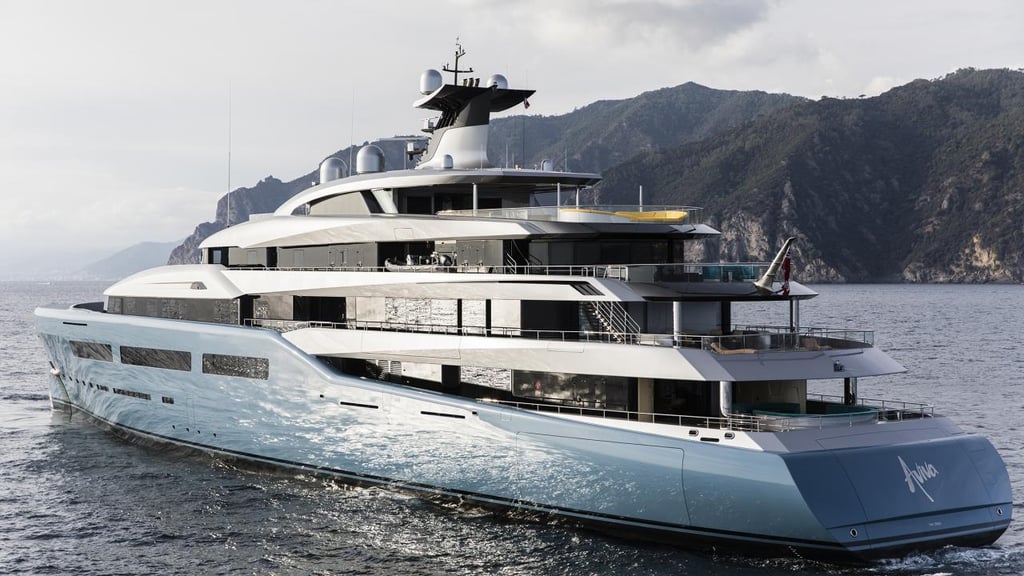
How Much Does It Really Cost To Own & Run A Superyacht?
If you think it’s hard work maintaining your tinny for weekend fishing trips up the river just take a minute to think about the costs involved in owning your own superyacht. Over the past decade, these behemoths of the sea have become the pinnacles of wealth and success for those with only the deepest of pockets.
These luxurious floating mansions are reserved for Russian billionaires, Saudi Princes and Hollywood celebrities, but if you’re lucky enough to win the lotto you might be able to join the upper echelon of society and own your own superyacht also.
The general rule? On average, owners pay 10% of the yacht’s value in up-keep costs per year, not including crew wages.
Initial Cost Of A Superyacht: ~ $10 Million
The cost of a superyacht varies depending on the size and technology it comes with. Chelsea owner Roman Abramovich’s Eclipse is a 533-foot monster that cost the billionaire $500 million, while America business mastermind David Geffen spent a cool $200 million on his 454-foot superyacht.
Registering Your Yacht: ~ $2,500
Just like any normal vehicle you have to register your brand new superyacht. This is a very important first step as choosing the flag and country of origin you want to register your yacht in can give some great benefits, especially when it comes to tax cuts. The Cayman Islands is a favourite amongst the super rich due to its tax breaks and relatively cheap registration fee, especially when compared to the actual cost of the yacht.
Insurance: ~ $353,850
As well as registering your new nautical explorer you’re going to want to make sure it’s insured. As you can imagine, insuring something as expensive as a superyacht isn’t cheap, so expect to fork out a few hundred thousand every year to make sure you’re covered.
Dockage: – $942,000 (Purchase)
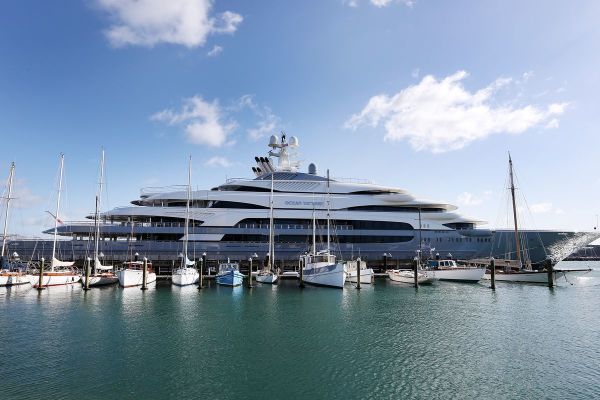
The price varies from port to port across the world, with some docks charging up to six grand a night for casual slots. This 100-foot slot in Antibes is going for a lazy 590,000€ ($942,000) if you’re in the market to buy.
If you want a spot in Port Hercules over Formula 1 weekend, you’ll be looking at $35,000 AUD for a Zone 1 spot from May 20th till May 27th for our yacht size in question, which really isn’t too outrageous.
Fuel: ~ $472,000
If you think everyday fuel prices for your automobile are expensive than you might want to turn away now. Using around 400 litres of fuel an hour, a 100-foot superyacht is going to set you back another half a million to make sure you don’t run out of gas in the middle of the ocean if in use for the majority of the year.
Maintenance & Repairs: ~ $400,000
Like anything mechanical, a superyacht is prone to suffering wear and tear over the years. From routine maintenance to fixing blown motors and electrical equipment, the annual cost can be extravagant but is part and parcel of owning such an expensive toy.
Crew: ~ $876,000
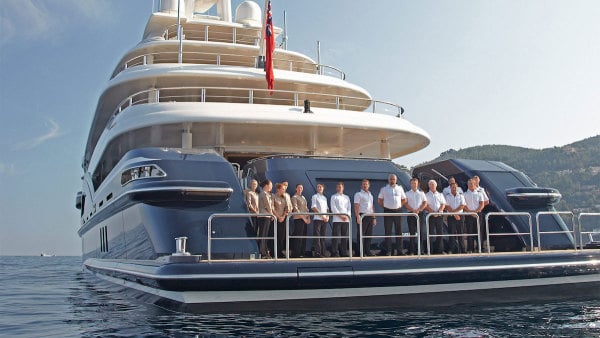
Unless you’re a trained captain steering your own yacht and making sure the day to day running goes smoothly, you’ll have to employ staff to over see operations. Captains cost roughly $1,400 per year per foot of boat – that’s $156,000 or so to command a mere 100-footer according to Forbes.
Deckhands and stewards are relatively cheap at $40,000 to $70,000 per year which is supplemented with you shouting them accommodation and food, but a good chef will cost you at least $100,000 a year. You’ll also need roughly one deckhand for each guest, and we’re assuming you can comfortably fit 8 amigos. And did we mention an engineer? Because hey, we all know boats break down all the time. That’ll set you back at least another $140,000.
Total: ~ $13 million
If you add up the initial cost of your 100-foot superyacht and your yearly expenses you’re looking at roughly $13 million for the first year, then around $2.1 million every year after to maintain it (assuming you pretty much live aboard and minus the purchase costs of the berth & yacht). So the short answer? A fuckload. Maybe in another life.
RELATED: The 750-foot Project Valkyrie will be the world’s largest superyacht
Subscribe to B.H. Magazine
Share the article.

The 2024 Sydney Harbour Concours d’Elegance Was A Watch & Car Enthusiast’s Wet Dream

Elon Musk Says The Tesla Roadster Will Do 0-97km/h In Less Than 1 Second

The Prius Walked So Toyota’s New bZ4X BEV Can Run

The Ineos Fusilier Is The Sexiest Electric Off-Roader Yet

The Best Go-Karting In Melbourne 2024
Related articles.

The Best Used Cars To Buy This Year (According To The Experts)

The BMW 5 Series Touring Is Returning To Australia As A Beastly Electric Wagon

Royal Huisman’s Project 406 Is The World’s Largest Purpose-Built Fishing Boat

The All-Electric Wagoneer S Ain’t Your Daddy’s Jeep

Searider’s Electric Searacer Jet Ski Is A Pod Racer For The Ocean

- Catalogue 2023
- Exhibitor portal
Superyacht fuel: The transition to a sustainable future
From the beginning of yachting, one constant factor over the decades has been the use of the internal combustion engine, using a form of gasoil (or diesel) as its fuel. There have been some exceptions, like the use of gas turbines, but 99.9% of the current fleet are using diesel as their primary fuel on board.
This article is a shortened version of an article written by Chris Warde (Peninsula Yacht Services). Read full article on Yachting Pages >
When you consider the efficiency and power output of the engines and generators used on yachts, along with their size and the volume of the fuel tanks required to carry sufficient fuel to provide the required cruising ranges of a modern superyacht, it is easy to understand why we currently see so much parity when it comes to propulsion and fuel. However, as the world moves away from fossil fuels and towards a more sustainable future, yachting faces the largest change in its history, - the need to move away from diesel.
The evolution of fuel
Unlike yachts, which have the potential to stay in circulation indefinitely, the average useful life of a commercial shipping vessel sits around 25 to 30 years, meaning achievement of the 2050 emissions target will largely depend on the ships designed and built today. However, future fuel solutions like ammonia and methanol are not currently matured, or scalable over the short term. A combination of technical and operational measures, innovations, as well as the adoption of available renewable fuel, is needed for decarbonisation of the shipping industry to move forward, while evolving and adapting as future fuel solutions mature.
Biofuel is seen by many as the answer to meeting the emissions target, especially in yachting. Produced from renewable sources, it has a smaller well-to-wake emissions carbon footprint when compared to hydrocarbon diesel fuel. It can be stored, transported, and used in the existing system and engines with minimum or no modification. It’s already available in the market and blending biofuel into hydrocarbon diesel fuel to reduce the carbon emissions of the consumer has become relatively common. As more governments incentivise or mandate inclusion of biofuel in their energy mix, it’s inevitable that the push for increasing use of biofuel will continue.
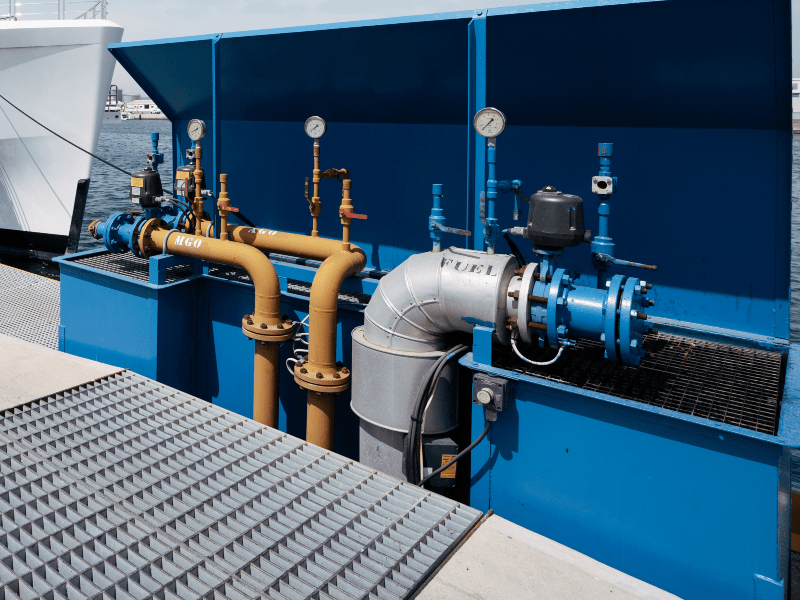
Importance of infrastructure
In yachting we are lucky to have the pioneering owners that are prepared to push the envelope of innovation. Whether for personal pride, or a genuine desire to help develop the next generation technology that will become commonplace on yachts of the future, there has always been a select band of superyacht owners that are prepared to take risks and introduce technology that has never been seen on yachts. The evolution of fuel and propulsion systems is no different. Most of the major leading superyacht yards have announced plans to build some form of hydrogen-powered yachts, or indeed are already building them. Due to the energy capacity of hydrogen in its natural state, most are looking at some form of fuel cell, reforming hydrogen from methanol or similar.
This type of innovation is undoubtedly important for the progression of the technologies that will be needed to achieve the longer-term goals and net zero, but in the short-term there is not the infrastructure in the supply-chain to support scaled production of these fuels. It is easy to get distracted by press releases from shipping powerhouses like Maersk or CMA-CGM announcing that they are developing ships to run on methanol and therefore assume that there will be a plentiful supply of fuel for methanol-powered yachts. But the unfortunate truth is that yachts don’t bunker in the same way that container ships do, and it is not a big enough industry on its own to warrant custom development of a supply infrastructure just for yachts. Unless there is a demand from another industry or market for methanol to be supplied by truck, the small-scale distribution yachting requires may never materialise to fuel these innovative new yachts.
Biodiesels, on the other hand, will be able to be used in the land-based diesel engines and generators that are also currently burning traditional fuels. Therefore, we are likely to see an evolution of the traditional diesel supply chain network that will serve the transition of land-based consumption. In the short-term at least, it’s more believable to expect to see the emergence of a biodiesel distribution network that could sustain the superyacht demand than the introduction of a completely new type of fuel. In the long term, if the current trend of electrification continues ashore, the number of truck suppliers will naturally decrease and demand waivers, leaving yachting more exposed to a potential shortage in available suppliers.
The markets' view on biodiesel
One of the most common biofuels used today is Fatty Acid Methyl Esters (FAME), also known as biodiesel. Other acronyms are also used depending on the feedstock, such as Rape Seed Methyl Ester (RME), Soybean Methyl Ester (SME), Palm Oil Methyl Ester (PME) or Used Cooking Oils Methyl Ester (UCOME). It is produced in a process known as transesterification, where vegetable oil or fats react with alcohol to form esters. The ASTM Standard Specification for Diesel Oil, ASTM D975, allows up to 5% FAME to be blended into the fuel and the European specifications EN590 allows up to 7%. As more operating experience was available on the use of FAME in conventional automotive diesel fuel, as well as on the use of distillate fuels containing FAME on board ships, the latest revision of the marine fuel standard, ISO 8217 released in 2017, had introduced a biofuel DF grade permitting up to 7% of FAME to be blended into marine distillate. The “de minimis” FAME limit for other non-biofuel grades was also increased from 0.1% to 0.5%.
Annex A of the ISO 8217:2010 International Standard states that while FAME has good ignition and lubricity properties together with perceived environmental benefits, there are potentially specific complications with respect to the storage and handling of distillates with a FAME component in a marine environment. These include:
- a tendency to oxidation and long-term storage issues
- an affinity to water and risk of microbial growth
- degraded low-temperature flow properties
- FAME material deposition on exposed surfaces, including filter elements
These complications have given FAME a bad reputation in yachting. The oxidation and affinity to water, leading to the greater risk of microbial growth, mean that many yachts will avoid FAME completely given the chance. The engine manufacturers are still assessing the effect on components such as hoses, gaskets and seals to see whether prolonged use of a higher FAME content fuel would cause issues. There is also, of course, the long-term storage issue, meaning single-season yachts or yachts in a prolonged yard period would either need an alternative fuel or a far more intensive fuel cycling and polishing regime for periods of inactivity.
Change in fuel management
While FAME diesel blends can be used in machinery and storage systems designed for conventional diesel fuel without problem, precaution and measure will have to be taken to manage the specific properties of the FAME components. Read more about change in fuel management >
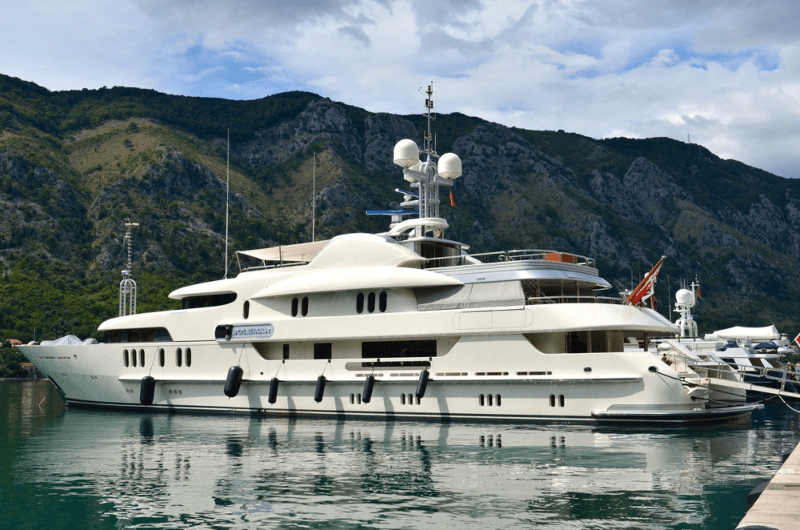
Renewable and green diesel
Hydrotreating is an alternative process to produce diesel from biomass. Hydrogen is used to remove oxygen from the triglyceride, creating hydrocarbons which are similar to the fossil diesel fuel components. Unlike FAME, additional chemicals like alcohol are not required and the all oxygen from the vegetable oils are removed in the process. Hydrotreated Vegetable Oils (HVO) are commonly referred to as renewable diesel or green diesel to distinguish from Fatty Acid Methyl Esters (FAME), or biodiesel. Figures published by the Renewable Energy Directive 2009/28/EC (“RED”) show that life cycle greenhouse gas emissions of HVO are slightly lower than those of FAME if both are made from the same feedstock.
The characteristic of FAME is known to depend on its level of saturation, properties of the feedstock and the process of production. This can potentially limit product availability especially for application in cold climates. In comparison, the properties of HVO have many more similarities with high-quality sulphur-free fossil diesel fuel, making it a much more suitable alternative for yachting. Cold flow properties of HVO can be adjusted during production to meet the requirements of cold-water cruising, with a CFPP (Cold Filter Plugging Point) of as low as -20oC. With no issues for stability, water separation, microbiological growth or impurities causing precipitation above cloud point, HVO can be used in diesel engines without blend walls or the modifications required for biodiesel.
Future for superyacht fuels
There is absolutely no doubt that yachting must be part of the maritime industry’s progression to net zero, but by no means is it going to be an easy transition. Superyachts, by nature of the operation, have a unique set of requirements and operating parameters. The way in which superyachts are run and used creates some unavoidable differences from the operation of the commercial shipping fleet. These differences will create challenges that the yachting community needs to work together to resolve. We are at a critical time of development; we need variety in concepts to ensure we are exploring all the possible future solutions, but we also need consolidation in final production.
For decades all yachts have used fundamentally the same propulsion systems, burning the same fuel and, as a result, have been able to source their fuel anywhere in the world. Should we create a future fleet that requires a variety of fuels, we run the risk of fragmenting the fuel supply infrastructure so much that yachts will no longer be able to cruise wherever they wish.
As the industry moves towards a more sustainable future, it is more important than ever that we see cooperation among manufacturers and consolidation in technology to ensure the freedom of global cruising grounds remains the appeal that underpins the industry.
Share your stories on leisure marine industry with us
Do you have an innovation, research results or an other interesting topic you would like to share with the leisure marine equipment industry? The METSTRADE website and social media channels are a great platform to showcase your stories! Let us know via [email protected]
Are you an METSTRADE exhibitor?
Make sure you add your latest press releases to your Company Profile in the Exhibitor Portal for free exposure.

Receive the best newsletter in the leisure marine industry - straight to your inbox!
Best read articles.

Your source for the latest news on yachts, boats and more. Read through our articles to find out how to compare boats and find the right fit for you!
Measuring your Yacht Fuel Consumption per Hour
Oct 10, 2019
less than a min
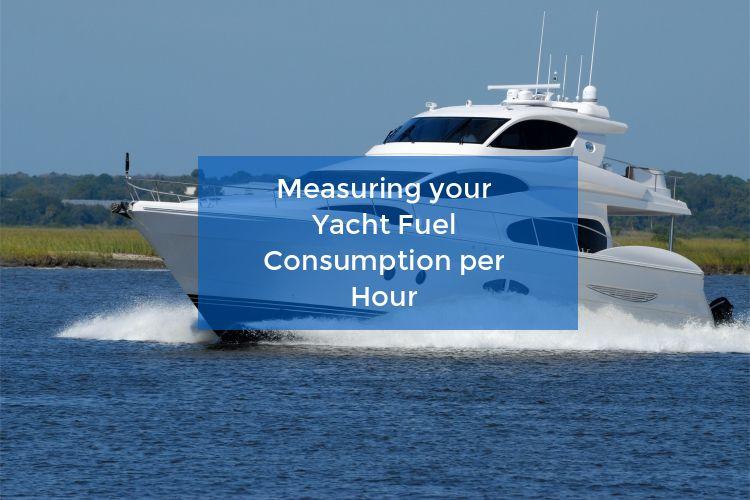
How to measure your yacht fuel consumption per hour
Yachts are quite similar to other vehicles in the sense that they work through fuel. Similarly to any other vehicle, it is important to calculate the yacht fuel consumption per hour before you plan a trip or before you purchase a vessel. Fuel consumption is also a good comparison base between boats. Whether before going on a trip, or buying a yacht, you need to have all the facts straight and know how much money you are going to invest not only at once upon purchase but also periodically.
There are different factors in the fuel consumption of a yacht. For example, if you use a generator or if you stay at anchor instead of docking, the fuel consumption will be increased . The itinerary will change fuel consumption as well. Sea is different than roads and the conditions in a sea change more dramatically than on land, which also impacts fuel consumption.
Fuel consumption for boats is measured in gallons per hour . The efficiency of boat fuel is measured in pounds of fuel that are used in an hour per horsepower. In order to be able to read the calculation right, any boat owner should know that gasoline is almost 6.1 pounds per gallon while diesel is 7.2 pounds per gallon .
Usually, if you consider that all sea conditions are pristine, the fuel consumption of a normal diesel engine is 0.4 pounds per hour for each unit of horsepower.
How to calculate yacht fuel consumption
Calculating it by hand is complicated, which is why many people choose to use online calculators . The way it works is it allows you to put down certain parameters that calculate the fuel consumption. These parameters include route , units of measurement and engine power .
Lastly , what most people are interested in is actually the cost of fuel consumption per hour. So the last parameter to include is the current price of fuel . Marine websites usually include this price up to date.
Another step that people have taken is develop a boat fuel consumption chart for their own boat and find the average in a month.
Alternatively, there is a formula that calculates the maximum fuel consumption of the engine which is:
GPH = (specific fuel consumption x HP) / The specific weight of fuel
This formula determines the fuel consumption when the engine is at full speed . If the speed is decreased then the fuel consumption is decreased as well. Basically, what you need to do is include the horsepower rate of the boat and you multiply it by the specific fuel consumption average and you divide that product by the weight of the fuel.
If you want to compare your boats GPH with other boats than you can use TheBoatDB database. If you already have a boat you can register for free and compare it with other boats within the database.
These are simple methods to calculate fuel consumption, however for a precise one you would have to know all the specifics of your boat and put the parameters through the calculator.
You might like these too

What is a Chine on a Boat lg ...
Oct 01, 2021

Flat Bottom Boat Advantages lg ...
Sep 30, 2021

Shoal Keel Sailboats Advantages and Disadvantages lg ...
Sep 13, 2021
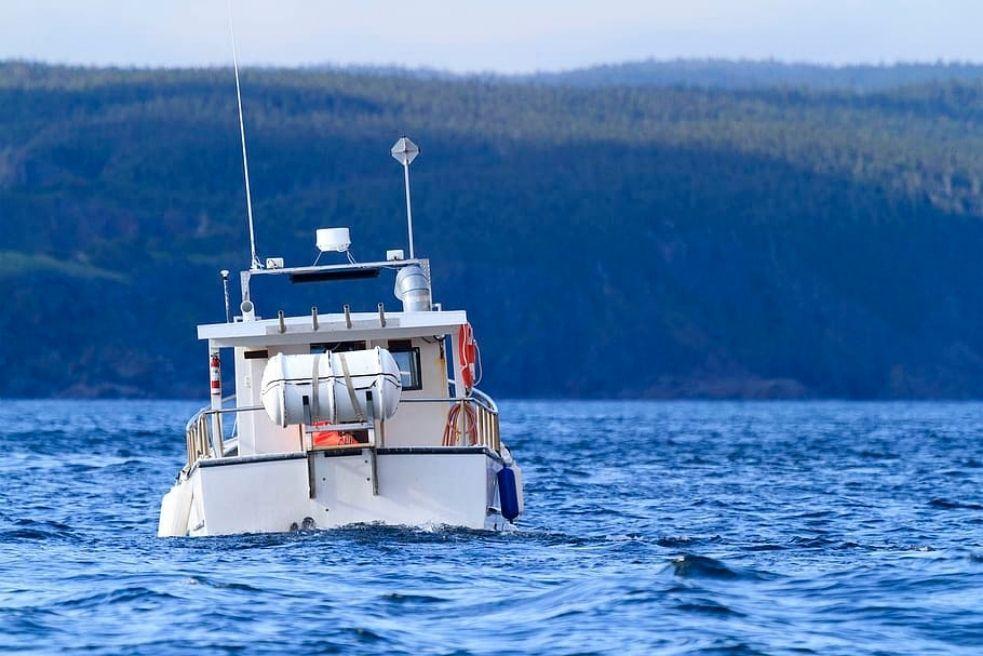
Shallow Draft Boats Explained lg ...
Sep 06, 2021
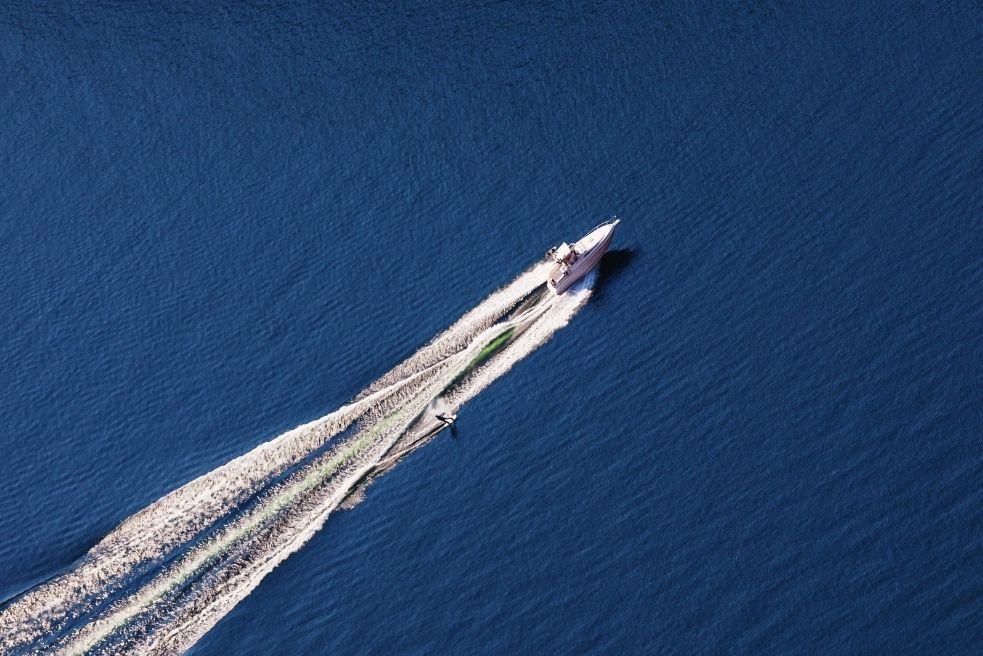
Best Boat for Open Ocean Sailing lg ...
Aug 27, 2021
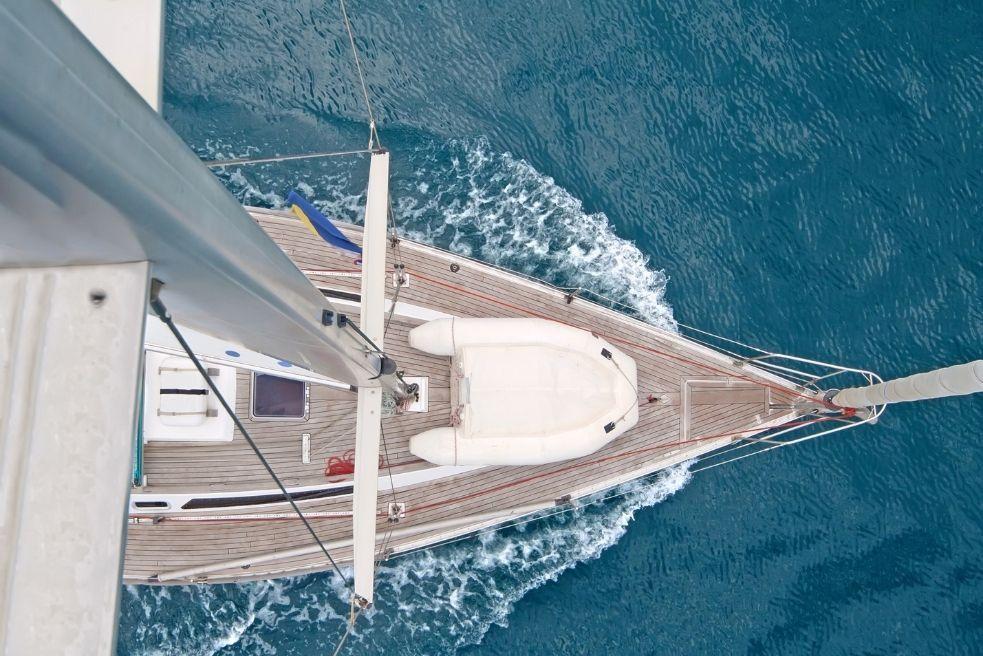
Best Boat Design for Rough Water lg ...
Aug 25, 2021
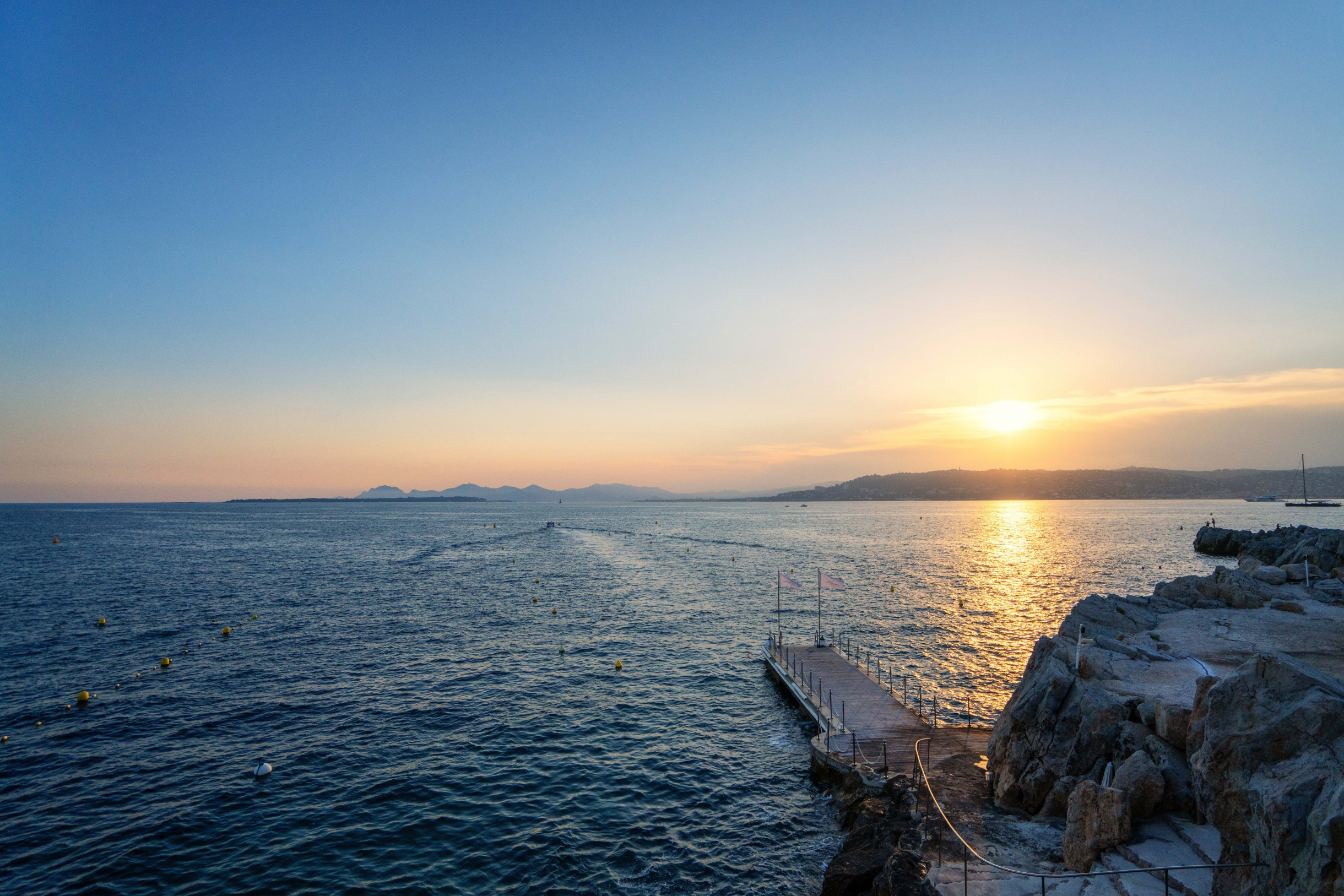
Welcome to the West Nautical Fuel Calculator
HOW TO USE:
To plot points on the map, click with your mouse - this will automatically update the distance table. Then enter the speed, fuel consumption, and fuel cost to determine the total cost of the trip.
Example 1: A fast 30m yacht cruising at 20 knots ( Lady Amanda ) will consume roughly 400-500 l/hour (more depending on engine type).
Exampe 2: A typical displacement yacht may cruise at 12 knots and consume 300 l/hour
Example 3: Some yachts can cruise at 10 knots ( Firefly ) and consume 100 l/hour
Example 4: A sailing catamaran can cruise at 8 knots and consume around 35 l/hour
Fuel prices can fluctuate, but typically fuel is between €0.8-1.2 per litre.
Get in touch with one of our client managers for a more accurate fuel distance calculation.
- 0 Fuel Consumed (L)
- 0 Total Cost
The Ultimate Guide to Yacht Fuel Efficiency Tips
- by yachtman
- September 13, 2023 August 26, 2023

Yacht fuel efficiency is important. It not only reduces costs but also helps the environment. Smart practices can give longer cruising and lessen carbon footprints.
Optimizing weight distribution is one way to boost efficiency. This prevents drag and improves fuel economy. Regular hull cleaning and maintenance are also key.
Advanced propulsion systems can improve efficiency, too. These eco-friendly alternatives reduce reliance on fossil fuels and provide smooth and quiet cruising. Utilizing tech like gyro stabilizers can increase stability and reduce engine power.
These tips can lessen your yacht’s environmental impact . Even small changes can reduce fuel consumption and help preserve our oceans. Implement these strategies and navigate in style and sustainability.
Pro Tip : Plan your route considering wind conditions. This optimizes sail usage and decreases engine power.
Understanding yacht fuel consumption
Let’s delve deep into a table that shows the impact of key factors on yacht fuel consumption. This will provide clear data, so we don’t feel overwhelmed.
Key Factors Impacting Yacht Fuel Consumption:
Now, let’s explore more about yacht fuel consumption. Regular check-ups help identify issues affecting fuel efficiency.
Energy-saving practices such as LED lighting, natural light, and air conditioning can reduce overall energy demands. Utilizing sails and wind power during optimal conditions reduces reliance on engines and conserves fuel.
Advanced tech like auto trim controls or navigation aids optimize performance and minimize power wastage.
By following these suggestions, yacht owners and captains can save costs and resources while reducing their carbon footprint. Understanding yacht fuel consumption is vital for smart decisions and optimizing any yacht journey.
Tips for optimizing yacht fuel efficiency
Want to save money and reduce your yacht’s environmental impact? Follow these key tips to make sure your fuel consumption is optimized!
- Regular maintenance of engines and systems; clean, inspect, service.
- Balance the load to reduce drag.
- Steady cruising speed for best fuel efficiency.
- Invest in a well-designed yacht with streamlined features.
It doesn’t stop there! Consider automatic trimming systems, advanced navigation, and even hybrid propulsion systems. According to ICCT, these can reduce fuel consumption by up to 30%! Keep up with industry trends to get the most out of your yacht. Enjoy sailing responsibly!
Best practices for fueling and refueling
Fuel efficiency is key for yachts. To ensure a smooth sailing experience and cost-effectiveness, follow best practices for fueling and refueling. Here are some tips to help you maximize fuel efficiency:
- Regular Maintenance: Check and service the engine, filters, and fuel lines regularly. This will keep your yacht working well and reduce fuel use.
- Fuel Quality: Use high-quality fuel from good sources. This will stop contaminants that can damage the engine or lower efficiency.
- Optimal Speed: Keep your yacht’s speed steady. This is best for its hull shape, weight, and engine specs. Excessive speed or changing the throttle often consumes more fuel.
- Trim Optimization: Adjust the trim of your yacht to find the sweet spot. This will reduce drag and increase fuel efficiency.
These practices not only give better fuel efficiency but also help with the engine’s life. By maintaining your yacht, using good fuel, finding the right speed, and optimizing trim, you can enjoy your sailing trip and save on fuel costs.
Furthermore, good planning for refueling can also make a difference in efficiency. Ideas include:
- Refuel at Optimal Times: Refuel during calm weather. This stops strong currents or winds that can make the process harder and affect accuracy.
- Choose Efficient Fueling Stations: Research and pick marinas with good reputations. They should provide clean fuel without impurities or adulteration.
- Monitor Fuel Levels: Track your yacht’s fuel consumption. This prevents running out of fuel and ensures timely replenishment.
By following these ideas, you not only speed up refueling but also maintain optimal performance throughout your yachting journey. After all, efficient refueling goes with fuel conservation and a better yacht experience.
Eco-friendly practices for yacht owners
Yacht owners can be eco-friendly! Strategies to minimize their impact on the environment include:
- Using biodiesel or hybrid engines to reduce carbon emissions.
- Installing solar panels for onboard systems.
- Opting for bio-based products, avoiding harsh chemicals and recycling waste.
- Selecting eco-friendly anchors and practicing responsible anchoring.
- Supporting local businesses that source supplies sustainably.
Plus, yacht owners should preserve natural habitats by avoiding sensitive areas and respecting marine wildlife. With these eco-friendly practices, they can contribute to the conservation of our oceans. Fun fact: a single superyacht can produce as much pollution as 50 cars! Source: The Guardian.
Conclusion: Benefits of implementing fuel efficiency tips for yacht owners.
Fuel efficiency tips for yacht owners bring lots of advantages. Through these tips, yacht owners can save money on fuel and also decrease their carbon footprint – helping to make the boating industry greener.
- Cut fuel costs: By using fuel efficiency tips, yacht owners can cut the amount of fuel they use, leading to great savings.
- Environmental friendliness: Fuel efficiency techniques can help reduce the environmental impact of boating, reducing air and water pollution.
- Longer trips: Fuel-efficient yachts can go further with the same amount of fuel, letting owners explore new places without worrying about refueling.
- Better reputation: Yacht owners who focus on fuel efficiency show their commitment to sustainability, gaining a good reputation with eco-friendly customers.
Not only do these tips have financial and environmental benefits, but they also give yacht owners the chance to help create a more sustainable future for boating.
In recent years, more attention has been given to fuel efficiency due to growing environmental concerns. The yachting industry is becoming more eco-friendly, with manufacturers investing in research and development to make fuel-efficient boats suitable for eco-friendly customers. As awareness increases, implementing fuel efficiency is now an important part of responsible yacht ownership.
Frequently Asked Questions
FAQ: What are some fuel efficiency tips for yachts?
Answer: Some fuel efficiency tips for yachts include maintaining a clean hull, reducing weight on board, optimizing cruising speed, regular engine maintenance, using wind power when possible, and monitoring RPM usage.
FAQ: How does a clean hull affect fuel efficiency?
Answer: A clean hull reduces drag and allows the yacht to glide smoothly through the water, reducing fuel consumption. Regular hull cleaning and anti-fouling treatments are essential for maintaining fuel efficiency.
FAQ: How can weight reduction help improve fuel efficiency?
Answer: Carrying excessive weight on a yacht increases fuel consumption. By removing unnecessary items, limiting the water and fuel load, and using lightweight materials, you can improve fuel efficiency and reduce costs.
FAQ: Why is optimizing cruising speed important for fuel efficiency?
Answer: Yachts have an optimal speed range where fuel consumption is minimized. By finding and maintaining this sweet spot, yacht owners can significantly improve fuel efficiency and reduce fuel expenses.
FAQ: What engine maintenance should be performed for fuel efficiency?
Answer: Regular engine maintenance, including oil changes, filter replacements, and tuning, ensures that the engine operates efficiently. Clean fuel injectors, propellers, and cooling systems also contribute to better fuel efficiency.
FAQ: How can wind power be used to improve yacht fuel efficiency?
Answer: Sailing with the wind whenever possible or using sails to assist the engine reduces fuel consumption. Setting sails in favorable wind conditions allows yachts to harness wind power and save fuel.
Leave a Reply Cancel reply
Your email address will not be published. Required fields are marked *
Save my name, email, and website in this browser for the next time I comment.
- Destinations
How to calculate yacht fuel cost – The boat fuel cost calculator
When you decide to enjoy a charter , there are many things you have to consider, not only when and where and whom you wish to join the party. I’m talking about the costs and expenses you will have during this memorable holiday with your loved ones. Depending on what type of vessel you are about the rent and the destination you will discover (as every place has its prices, pros, and cons), you will have a different bill at the end of your cruise .
How much cost chartering a yacht?
The most common questions we receive from our customers before they embark aboard the selected yacht they booked with us for their charter are:
- What does the price include?
- What is APA?
- What does APA stand for?
- What are the extras?
- How much is VAT?
- Can I have an estimate of the extra costs and expenses?
- How much will I spend in terms of fuel?
- What does the fuel boat cost?
- How to calculate fuel boat cost ?
- What is the price to dock the yacht at the marina?
Fill the below form to receive instantly the estimate of fuel cost for your charter
Javascript is disabled on your browser. Please enable it in order to use this form.
FIND YOUR BOAT
Your form has been submitted.
Thank you for your request. Our team will answer to you within 24 hours. I you have an urgent request then you can also call us on +39-3343600997.
We faced problems while connecting to the server or receiving data from the server. Please wait for a few seconds and try again.
If the problem persists, then check your internet connectivity. If all other sites open fine, then please contact the administrator of this website with the following information.
TextStatus: undefined HTTP Error: undefined
Some error has occured.
Our expert Charter Managers are glad to assist you with all the questions, clarifications, thoughts, and doubts you may have from the boat’s selection to your charter’s arrangements until the disembark. We always reserve transparent and clear 24/7 assistance to our new and repetitive clients, without surprises.
How do I calculate yacht fuel cost?
When you charter a power yacht , the most critical cost to support is for sure fuel .
When you rent a sailboat or hire a catamaran , don’t forget about the fuel cost for generators , the outboard engine of the dinghy. It would be a different cost at the end (definitively lower than aboard a motor yacht), but pay attention to air conditioning, especially when you spend the night at anchor.
Yacht fuel calculation: how it works
It’s time to take a map and find on it all the spots and destinations you wish to reach! Keep in mind that you can predict the weather conditions only 10 to 7 days before embarking.
Prepare your sailing itinerary .
Your sailing route will depend on many factors, as the engine power and cruising speed of the yacht, the weather conditions, and the nautical miles you intend to navigate. Naturally, you will have to be informed about the actual market price of the fuel in the destination you will sail to have the right or most approximate calculation of the boat fuel cost .
Together with the assistance and suggestions of our sales department, our experienced technicians created an advanced, quick, and efficient tool for the yacht fuel calculation that we call the “ Boat fuel calculator .” This tool allows you to have a concrete and actual analysis of the yacht fuel consumption and price, starting with your itinerary plan on the map to the final result.
Let’s begin: select the point of embarkation of your charter on the map. Now continue pinning all the beautiful spots you want to reach by boat during your yacht charter (as you can see, the calculator automatically updates the number of nautical miles) to disembark. You will obtain the total number of miles.
Calculate the nautical miles
Naturally, you can choose the unit of measures (nautical miles, miles, km): in this case, it would be the nautical miles and, every time you pin a new destination on your map, from the embark to the disembark, the tool updates the total number of miles cruised.
Now that we have the total number of miles, mandatory to calculate the boat fuel cost of our cruise. We need to know the yacht’s cruising speed, the engine consumption, and the market price of diesel in our next sailing destination.
Engine power and consumption
Now that we have the nautical miles, we need to know the engines’ power (the hp) and the real engine consumption of the boat we rent to have the actual yacht fuel calculation .
The last essential element we need to obtain the yacht fuel cost of our charter is the market price of gas in the destination we will sail. To have the diesel’s actual merits, you can consult many updated webpages of marinas and fuel bunkers, which continuously report the existing fuel prices day by day. (You can also check at https://www.marineyellowpages.com/ )
The fuel consumption formula
What we are looking for is the expense of fuel we will have during our cruise.
Now that we have all the information we need for the yacht fuel calculation, and so:
- Total nautical miles;
- Engine consumption;
- Cruising speed;
- The market price of gas;
We can proceed with the real boat fuel calculator using our formula.
Firstly, we need to know our charter’s travel time; I’m referring to the cruise duration. The formula to obtain the cruise duration is determined by dividing the number of nautical miles by the number of knots (the boat’s cruising speed).
For example, if the nautical miles we are planning to navigate are 150 nm and the cruising speed of our yacht is 18 knots:
150 nm / 18 kn = 8,333 hr
So if we want to cruise in a total of 150 nautical miles with a cruising speed of 18 knots, we will take about 8,333 hours. You will always have to consider the sea and weather conditions, which will influence the engines’ consumption.
And now that we have the “time,” the “duration” of our charter? How to calculate the yacht fuel cost?
If the engine of our boat consumes 250 lt/hr, we have to multiply the time of our cruise, so in this case, 8,333 hr by the boat fuel consumption, so by 250 lt/hr:
8,333 hr / 250 lt/hr = 2.082,50 lt
2.082,50 are the liters we consume cruising for 8,333 hr with engine consumption of 250 lt/hr. Now we have to multiply the number of liters just obtained by the market price of fuel, that we can suppose at 1,50 Euro/lt :
2.082,50 lt x 1,50 Euro = 3.123,75 Euro
Let’s resume the “magic formula” for yacht fuel calculation. If your sailing itinerary contemplates 150 nautical miles at a constant cruising speed of 18 knots, 250 lt/hr consumption, and marine diesel cost of 1,50 Euro/lt, at the end of our yacht charter, we will have a bill of 3.123,75 Euro.
The calculations of boat fuel cost are always approximate and depend on sea and weather conditions and atmospheric and natural events.
Our professional sailing tips and recommendations
Our team is always pleased to assist you, providing free 24/7 professional support for your charter arrangements and customizing your charter and journey. Feel free to contact us and get our advanced sailing tips and recommendations about your next charter: sailing itinerary, best bases, and marinas, where to spend the night at anchor, fuel bunkers, ATM and exchange, transfers from/to airport, groceries, and markets, restaurants and excursions, activities for kids and family, private celebrations, wedding, and corporate events, and much more.
Send us an email at [email protected]
Call or or text us (also on WhatsApp) +393343600997
Top sailing destinations
Yacht charter Italy – Sardinia yacht rental – Seychelles catamaran charter – Luxury yacht charter Thailand – Boat charter Caribbean – Catamaran charter Philippines – Greece yacht charter – Catamaran charter Mykonos – Boat hire Ibiza – Yacht rental Sicily – Amalfi yacht charter – Cannes yacht charter – Maldives catamaran – Cannes yacht charter
SEND NOW YOUR ENQUIRY FOR YOUR NEXY YACHT CHARTER WITH YOUR BOAT HOLIDAY:
RECENT POSTS
92′ 11”/28.3m Mangusta Yacht Only One available in the Aeolian Islands, Sicily, this Summer 2024
124′ 1”/37.8m heesen yacht magix available in the ionian sea until 9 july 2024, book yolo sunreef 70 in the caribbean now and enjoy 5% off until february 28th, 2024, custom line navetta 26 friend’s boat ready to commit for 2024 charters.
Share this Post

What Fuel Do Superyachts Use?
Owning a boat is a dream for many people. For some individuals, however, where money is no object that dream boat becomes the ultimate luxurious vessel: a superyacht.
The majority of superyachts run on marine diesel and consume huge amounts of fuel even when stationary, let alone when the superyacht is moving. There are however more eco-friendly designs that utilize the likes of biofuels and rechargeable batteries to run.
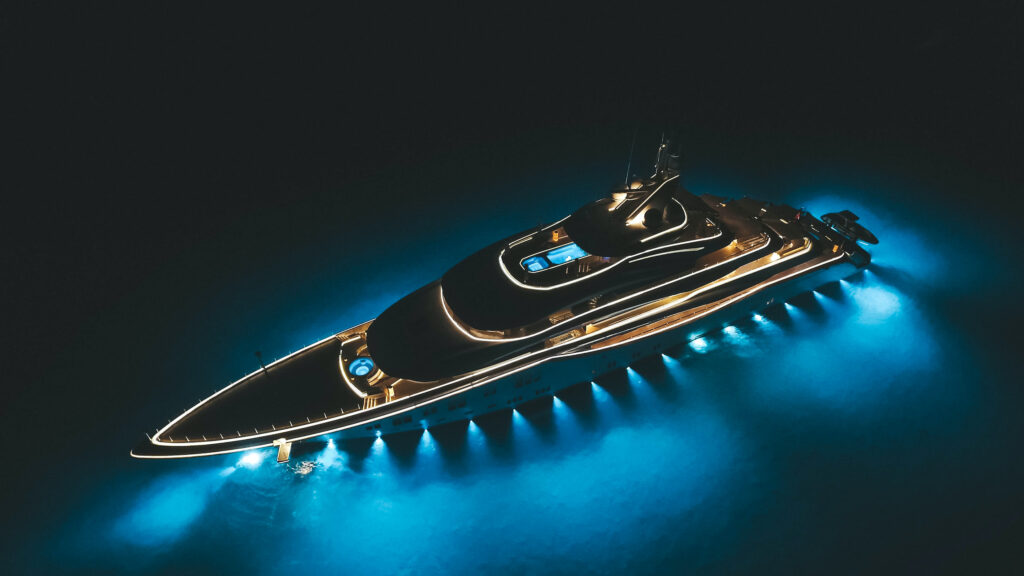
While there are no specific criteria that define a superyacht as a superyacht, for instance, no set length range or a certain price tag, it’s safe to say the world’s biggest, most luxurious, and most expensive yachts are superyachts. Most of these vessels use marine diesel engines , though the size and power of the engine will vary depending on how large the superyacht is.
Fuel consumption and operating costs
Superyachts are awe-inspiring in their floating grandeur but their luxuriousness isn’t the only thing likely to surprise people. The sheer amount of fuel required to operate superyachts can be hard to believe.
Consider a superyacht measuring around 70 meters in length with a diesel engine. Such a vessel can use around 500 liters of diesel per hour just to keep the engines running, without the superyacht actually being on the move.
This fuel consumption will increase when the vessel is moving, with higher speeds requiring more fuel consumption. However, fuel is also used to supply services on the superyacht such as electricity, so the number of guests onboard and what services are being used at any given time will also affect fuel consumption levels.
While huge amounts of fuel contribute to the operating costs of a superyacht, this is just one small piece of the picture. There are numerous other costs that are all part of owning and operating a superyacht.
These include berthing costs, maintenance costs, security costs, and salary costs for the captain and the crew both onboard the vessel as well as any crew based on the shore. Not to mention the cost of installing additional luxuries and toys on the superyacht, which can range from jet skis to helicopter landing pads, swimming pools , and more.
Potential purchasers of these luxurious vessels should expect to pay around 10% of the superyacht’s purchase cost in operating and maintenance expenses each year. With these superyachts costing millions of dollars (sometimes hundreds of millions) to purchase before any annual operating costs are considered, it’s not hard to see why these vessels are firmly restricted to the realms of the superrich.
Are there greener alternatives to marine diesel and diesel engines?
The industry is continually working on ways to make marine fuels and diesel engines more efficient and cleaner, thereby reducing emissions. As environmental regulations become increasingly tighter, superyacht owners may need to start considering greener fuel alternatives and ways to reduce carbon dioxide emissions.
One solution could be Neste MY Renewable Diesel, a biofuel made from 100% renewable raw material and an option that could reduce carbon dioxide emissions by 90%. Additionally, the marine fuel Neste Marine 0.5 would allow vessels to comply with global sulfur caps, though the use of this fuel might be limited in superyachts.
These are not the only options, however. Alternative propulsion systems involving hybrid electric power, solar power, and wind power offer a more eco-conscious approach to building and operating superyachts. Eco-friendly design is the primary driving force behind some superyachts, such as the Black Pearl which can reportedly operate without using any fossil fuels.
Other eco-conscious superyachts feature the likes of a choice of operating modes that can range from fuel-efficient diesel mode to diesel-electric or fully electric modes.
Additionally, there are other ways to increase the fuel efficiency of superyachts such as adding a bulbous bow to reduce drag, a trim wedge that creates vertical lift or encouraging guests to consume less power on the superyacht (which burns less fuel). Even painting the hull color white can help, as this allows the vessel to reflect more sunlight, which will allow for lower air conditioning needs, thereby reducing fuel consumption.
Sailing into a more innovative, eco-conscious future
While the majority of superyachts continue to use marine diesel, there is no doubt that other alternatives will start to become more prevalent as environmental regulations tighten and eco-conscious yacht designers and owners look for greener ways to operate their vessels.
- Privacy Policy
© 2021 Black Sands Media - All Rights Reserved
- Food & Drink
- Leisure & Recreation
- Art & Collectibles
CALL US TODAY Fort Lauderdale: 954-467-9010 Punta Gorda: 941-505-2400
Fort lauderdale: 954-467-9010 punta gorda: 941-505-2400.
Calculating Yacht Fuel Cost
by Marine Diesel Specialists | Aug 5, 2019 | Yacht Life , Yachting Travel | 0 comments
There are many costs associated with yacht ownership, and fuel is one of the biggest concerns for yacht owners and those who charter yachts as a source of business revenue. There are many different systems within your yacht that will require diesel fuel, and new versus used marine engines will bring different fuel efficiencies that are worth considering when trying to calculate your fuel costs. Everything from how many gallons are in a yacht’s tank to the specific mileage could come down to the quality of your engine and the size of your boat. This means that, without expert help, it could be hard to calculate. That’s why the team at Marine Diesel Specialists has created this quick overview that will explain yacht fuel capacity and yacht fuel cost through nautical miles, as well as how you can calculate these costs on your own.
Nautical Mile vs. Mile
The first key in calculating yacht fuel cost is to figure out how far you will be traveling. After all, these vessels are meant to transport, and like many modern transportation methods, yacht fuel capacity and use could change due to variables such as these. Mapping out your journey will help you see how many miles you’re traveling, and then you’ll convert this to nautical miles. When calculating nautical mile vs. mile consider that nautical miles are measured in two options, either 1/60th of a degree between latitude or longitude on a map or as 1.15 US miles. Knowing the distinction between nautical miles and US miles or kilometers is a must. Some boaters may find themselves confused by their fuel use and yacht fuel cost being different from what they have anticipated.
Finding the Cost of Marine Diesel Fuel With Nautical Miles
If you’re choosing your destination on a traditional map, each 1/60 th of a degree on your map will calculate as a nautical mile. This is a fast and easy way to calculate fuel consumption using just a map and compass if you are not using a GPS when planning your nautical voyages. For those of us who are using GPS tools or digital maps, one nautical mile is about 1.15 miles or 1,852 meters. Traditionally, a knot is the speed of one nautical mile per hour. Many people use online mapping services as a way to get an accurate measurement of the distance they will be traveling on their journey. Using all the available resources when matching fuel cost to the yacht fuel capacity and how it relates to distance is always a good idea.
How to Calculate the Cost of Marine Diesel
Now that you know the nautical miles between your starting point and destination and have gotten an accurate measurement by using the tips and resources stated in this article, you can analyze your vessel’s average fuel consumption to figure out your yacht fuel costs. The exact rate of fuel cost per hour will vary from yacht to yacht, depending on engine type, age, upkeep, and more. Having more reliable and efficient engines, such as MAN diesel marine engines, will be a benefit due to their reliability and efficiency.
On average, a quality marine diesel engine will burn about 0.4 pounds of fuel per hour for each unit of horsepower. Other factors, such as water conditions, drag, and vessel weight, will also increase your fuel burn, so they are important to keep in mind during your voyage. In typical and relatively calm conditions, a 300-horsepower diesel engine would burn 16.6 gallons of diesel fuel per hour with variance based on the previously stated factors. You would then combine this fuel consumption per hour with the number of nautical miles to be traveled and the expected travel time to calculate your yacht fuel cost.
Knowing how to calculate marine fuel prices using nautical miles is a skill that every boater should be proud to have. It will come in handy many more times than they would think. Once you have mastered this form of preparation for a nautical adventure, you’re going to be able to get more accurate information in less time using just a few tools and a wealth of knowledge gained from experience.
Our Expert Marine Diesel Services Are Here to Help
Marine fuel is typically sold by the liter or gallon, and the prices vary depending on the time of year and other factors. Keep an eye out for any trends you may have noticed in previous years, and use that knowledge to plan out your purchases effectively. As stated before, yacht fuel cost can be affected by the quality of your marine diesel engine, which is why it is important to have the best engines available!
Get in touch with our Fort Lauderdale Marine Diesel Specialists experts or our Punta Gorda Gulf Coast Diesel Service professionals to learn all about the products we offer. We are certified vendors of MAN marine engines, along with a long list of other brands that are sure to be the perfect fit for you. If you are interested in boat servicing and repairs , which can be done by our marine rebuild specialists, you’ll also find yourself in luck with our team.
If you want to learn more about all things marine engines, be sure to take a look at some of our other articles and get insights from professionals in the industry who have years of experience dealing with marine diesel and MAN engines.
Related Readings
- Marine Diesel Fuel Explained
- When and Why to Change Oil in Your Boat Engines
Our Marine Diesel Specialists offer a variety of products and services to provide marine diesel solutions in Fort Lauderdale and Punta Gorda. Our authorized MAN Engine dealers can offer expert maintenance, repair, and survey services, as well as complete engine, transmission, and generator overhauls. If you are seeking top-quality marine diesel solutions, products, or services, don’t wait to contact our Marine Diesel Specialists and Gulf Coast Diesel Service.
Submit a Comment Cancel reply
Your email address will not be published. Required fields are marked *
Save my name, email, and website in this browser for the next time I comment.
- Name * First Last
- Questions & Comments
- Name This field is for validation purposes and should be left unchanged.
- Standard Engine Parts
- Marine Fuel System Solutions
- South Florida Boat Fuel Filters
- Oil Filters
- Starting Air System
- Marine Engine Cooling System
- Heat Exchanger Caps
Other Product Lines
- Citgo, Mobil & Shell Oil
- K&N Filters

How Many MPG Does a Yacht Get?
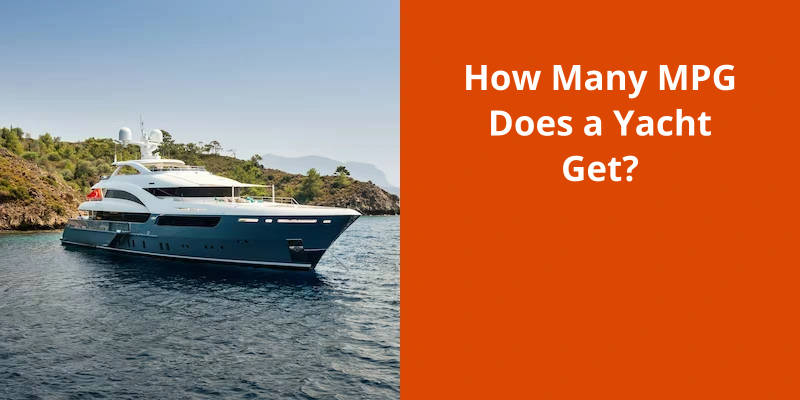
When it comes to determining the fuel efficiency of a yacht, several factors come into play, including the size and weight of the vessel, the type of motor it has, and it’s cruising speed. While smaller skiffs with lightweight bodies and lower horsepower motors can achieve higher miles per gallon (MPG) ratings due to reduced drag, average-sized yachts typically offer a fuel efficiency range of around 3-5 MPG while cruising. This translates to an approximate cruising speed of 25 miles per hour and a fuel consumption of 4 MPG. It's worth noting that these estimates can vary depending on the specific make and model of the yacht, as well as external factors such as sea conditions and the load carried on board. Ultimately, finding the right balance between speed and fuel efficiency is essential for yacht owners who want to enjoy the open waters while minimizing their environmental impact and operating costs.
How Much Fuel Does a 100 Foot Yacht Hold?
It determines how far they can travel without needing to refuel and affects the overall cost of operating the vessel. The size and type of the yacht also play a significant role in determining fuel capacity, as larger yachts tend to require more power and thus consume more fuel. Additionally, certain yachts may be equipped with additional fuel tanks or have larger tanks installed, allowing for extended cruising range.
The fuel capacity of a 100-foot yacht can vary greatly depending on it’s design and purpose.
Fuel tanks are usually located below deck or in specific compartments designed to safely store fuel. These tanks are built to meet strict safety standards and are often made from durable materials such as aluminum or fiberglass.
Most yachts use diesel fuel, as it’s more efficient and safer for marine applications compared to gasoline. Diesel fuel also provides greater range and fuel economy, which is crucial for long-distance cruising. However, some smaller recreational yachts may still use gasoline as their fuel source.
Factors That Affect the Fuel Efficiency of a Yacht: This Topic Could Explore How Various Factors, Such as Hull Design, Engine Type, Weight Distribution, and Cruising Speed, Can Impact the Fuel Efficiency of a Yacht.
When it comes to the fuel efficiency of a yacht, there are several factors that can play a role. These include the design of the boat’s hull, the type of engine it has, how weight is distributed throughout the vessel, and the speed at which it cruises. Each of these factors can influence the amount of fuel a yacht consumes, and understanding their impact can help yacht owners optimize their vessel’s fuel efficiency.
The fuel consumption of a super yacht is a significant consideration for those who enjoy the luxury and adventure of sailing the open seas. With engines running, an average 70-meter luxury yacht will consume approximately 130 gallons of fuel per hour. However, this figure escalates considerably when the yacht is in motion. To achieve a speed of 20 knots, you can expect to burn around 1000 gallons of fuel per hour, amounting to an approximate cost of €2000.
How Much Fuel Does a Super Yacht Consume?
The fuel consumption of a super yacht is a topic of significant interest and discussion among yacht enthusiasts and experts. It’s important to note that the exact fuel consumption can vary depending on various factors, including the size and design of the yacht, the speed at which it’s operated, the weather conditions, and the weight carried on board.
On average, a 70-meter luxury yacht will consume around 130 gallons per hour with the engines running. However, it’s crucial to recognize that this figure can increase significantly when the yacht is in motion. When aiming to achieve a speed of 20 knots, the fuel consumption can rise to approximately ±€2000 per hour, which is roughly equivalent to 1000 gallons of fuel.
Some yachts utilize diesel engines, which can be more economical compared to other engine options. However, larger yachts with higher speeds may require more powerful engines that consume more fuel. Therefore, it’s important for yacht owners and operators to consider the trade-off between power, speed, and fuel consumption when selecting the right vessel for their needs.
In addition to the propulsion engines, a super yacht may also have auxiliary engines that power various systems onboard, such as air conditioning, lighting, cooking, and entertainment. These auxiliary systems contribute to the overall fuel consumption of the yacht. Therefore, it’s essential to manage and optimize energy usage to minimize fuel consumption and reduce environmental impact.
Efforts are underway in the yachting industry to develop more fuel-efficient vessels and explore alternative energy sources such as hybrid propulsion systems and renewable energy technologies. These advancements aim to reduce the environmental impact of super yachts and promote sustainability within the industry.
By monitoring and managing fuel consumption, yacht owners can make informed decisions to optimize efficiency and minimize costs. Whether by implementing energy-saving technologies or adopting fuel-efficient practices, every effort contributes to a more sustainable and cost-effective yachting experience.
Factors That Affect Fuel Consumption on a Super Yacht (e.g., Size, Design, Weather Conditions)
There are several factors that can affect fuel consumption on a super yacht. One of the main factors is the size of the yacht itself. Larger yachts tend to require more fuel to power their engines and propulsion systems.
Another important factor is the design of the yacht. Yachts that are designed to be more aerodynamic and efficient in the water tend to use less fuel compared to yachts with less efficient designs.
Weather conditions also play a role in fuel consumption. Rough seas and strong winds can create more resistance, causing the yacht’s engines to work harder and consume more fuel.
Other factors that can affect fuel consumption include the weight of the yacht, the efficiency of the engines and propulsion systems, and the speed at which the yacht is traveling. By considering these factors, yacht owners and operators can optimize fuel consumption and minimize their environmental impact.
Source: Yacht Fuel Cost Calculator – How to Estimate the Costs
Now that we’ve established that it costs $6,600 to fill up a 60-foot yacht with a fuel capacity of 1,200 gallons, let’s explore some other factors that contribute to the overall cost of maintaining and operating such a vessel.
How Much Does It Cost to Fill Up a 60 Foot Yacht?
The cost of filling up a 60-foot yacht can vary depending on the fuel capacity and the average fuel price. Assuming the yacht has a fuel capacity of 1,200 gallons and an average fuel price of $5.50 per gallon, it will cost approximately $6,600 to completely fill up the tank.
It’s important to note that these estimates may fluctuate as fuel prices can change over time. Moreover, factors such as the efficiency of the yachts engines, speed, and weather conditions can also affect fuel consumption.
In addition to the cost of filling up the tank, yacht owners should also consider other expenses associated with operating a yacht. Maintenance, insurance, docking fees, and crew salaries are just a few examples of the ongoing costs that can be associated with yacht ownership.
To ensure accurate estimates, it’s advisable for yacht owners to keep track of their vessels specific fuel consumption rates and the current fuel prices in their area. This will enable them to make more precise calculations and budget accordingly.
Financial planning and budgeting are crucial to ensure that all costs are accounted for and to enjoy a stress-free yachting experience.
In addition to full displacement trawlers, there are other types of yachts that offer impressive fuel efficiency. Some manufacturers have started incorporating hybrid propulsion systems and energy-efficient design features into their yachts, allowing for reduced fuel consumption and emissions. These advances in technology are revolutionizing the yachting industry, offering environmentally-conscious options for yacht owners without compromising on luxury or performance.
What Are the Most Fuel Efficient Yachts?
Full displacement trawlers are renowned for their exceptional fuel efficiency, making them the top choice for those seeking a yacht with optimum economy. Consider yachts like Northern Marine, which feature single engines capable of delivering a smooth and consistent cruising speed. With an impressive range of 1.5 to 2.5 nautical miles per gallon, these yachts enable long-distance voyages without compromising on comfort.
What sets these yachts apart is their ability to traverse the globe effortlessly, thanks to their efficient fuel consumption. Being able to go anywhere in the world while achieving commendable fuel economy is a major advantage for adventurous yacht enthusiasts. This capability ensures that owners can embark on extended journeys without worrying about excessive fuel expenses holding them back.
Moreover, the comfort factor of full displacement trawlers isn’t compromised in the pursuit of fuel efficiency. These yachts offer spacious and luxurious interiors, designed to provide a home-like experience on the water. Whether it’s a well-appointed stateroom, a gourmet galley, or a cozy salon, these yachts provide a high level of comfort that enhances the overall cruising experience.
The reduced fuel consumption of these yachts helps to minimize their environmental impact, aligning with the growing focus on sustainability within the yachting industry.
Design and Engineering Innovations: Highlighting the Latest Advancements in Yacht Design and Engineering That Contribute to Improved Fuel Efficiency, Such as Hull Shape Optimization, Lightweight Materials, and Advanced Propulsion Systems.
- Application of hull shape optimization techniques
- Utilization of lightweight materials for construction
- Adoption of advanced propulsion systems
MJM Yachts has taken the lead in fuel efficiency and powerboat cruising performance with their exceptional nautical miles per gallon (NMPG) and speed per horsepower. Their commitment to sustainable boating is evident in their innovative design and engineering, making them the top choice for those seeking a fuel-efficient yacht.
What Is the Most Fuel Efficient Yacht?
MJM Yachts has carved a niche for itself in the competitive world of powerboats by being recognized as the most fuel efficient yacht manufacturer. Their commitment to maximizing fuel efficiency has earned them a reputation that no other brand can rival.
Their models incorporate slender hull forms and advanced hydrodynamics, which minimize drag and resistance. By reducing the power needed to propel the yacht through the water, fuel consumption is significantly reduced.
In addition to their cutting-edge hull designs, MJM Yachts also utilizes lightweight construction materials that further enhance their fuel efficiency. By using advanced composite materials, such as Kevlar and carbon fiber, the weight of the yacht is dramatically reduced. This reduction in weight translates into increased fuel efficiency, as less power is required to propel the lighter vessel.
Their commitment to maximizing fuel efficiency through innovative design, lightweight materials, and advanced propulsion systems sets them apart from the competition.
Comparison of Fuel Efficiency Between MJM Yachts and Other Yacht Manufacturers.
When comparing the fuel efficiency of MJM Yachts with other yacht manufacturers, one can evaluate the performance in terms of fuel consumption. By analyzing the specific factors that contribute to fuel efficiency, such as engine technology, hull design, and weight, it’s possible to determine which yachts offer better fuel economy. It’s important to consider these variables and conduct an unbiased assessment to make accurate comparisons.
However, on average, most yachts will achieve a fuel consumption rate of around 3-5 miles per gallon while cruising.
Related Posts
What bus has the best mpg, do runners really improve mpg in tundra, how many mpg does a 2001 lexus get, does shell v-power increase mpg.
Yachts and Fuel – How Much do they Really Consume?
Fuel is one of many annual running costs of a yacht. Not only does the yacht need fuel for cruising; the generators require it to keep the vessel running while at anchor and underway. As well as this, many of the water sports toys require it too.
Some yachts cross the Atlantic Ocean twice a year between the Mediterranean and Caribbean while others embark on world cruises. That equates to a lot of fuel.
So How Much Do They Really Consume?
According to the Yachting Pages, the longest Superyacht in the world, 180m M/Y Azzam, holds 1,000,000 litres of fuel. To put it into perspective, that is the equivalent of filling a regular hatchback car 23,800 times. Or, six Boeing 747 commercial airliners.
West Nautical’s Vessel Manager, Tony Hildrew, a former Yacht Chief Engineer said:
“Fuel is the single biggest expense when it comes to yacht operations, it is estimated that the global spend on fuel is around $150bn annually however this shouldn’t put you off, there are a number of ways to ensure your fuel consumption doesn’t get out of hand. Implementing a Ships Energy Efficiency Management Plan or SEEMP for short is a great way to keep fuel costs down without compromising on your cruising experience.”
Each yacht will consume fuel differently for a number of reasons. It could be the size and make of the engines. Or, how often the yacht is using generators. As well as the number of tenders and water sports toys on board that require fuel. For example, if the yacht is out at anchor and running on generators 90% of the time, the fuel consumption will be much higher than a yacht that is in a marina at night and connected to shore power and water.
Another factor that will affect fuel consumption is the yacht’s itinerary. This is because the sea conditions will impact how much fuel the engines consume.
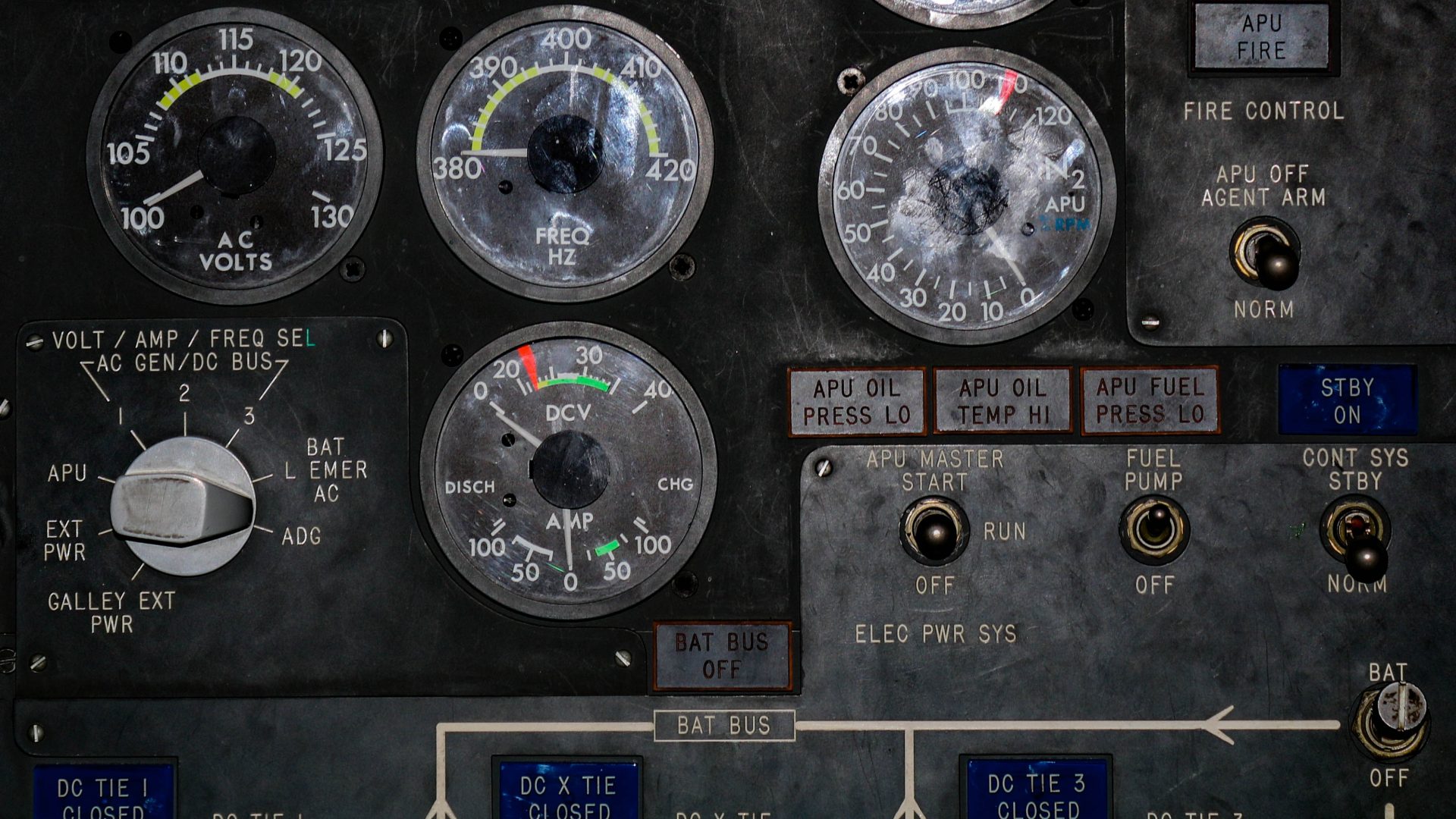
How Is Consumption Measured?
You will be able to input the start and ending points of your cruise on the map. This will automatically update the distance table. The next step is to enter the speed, fuel consumption and cost of fuel per litre to determine the cost of the trip.
Here is an example: A fast 30m yacht cruising at 20 knots will consume roughly 400 – 500 litres depending on the engine type. This would equate to the total consumption of 2500 litres for a distance of 100 nautical miles.
Another example is, a 70m yacht looking to travel 100 nautical miles with the engines burning 1000 litres per hour would add up to a total consumption of 8335L for that passage. Depending on where the yacht bunkered, the estimated cost with the price per litre being on the low end at €0.90 per litre would cost a total of €7501.50. An example of a 100 nautical mile passage would take you from Saint Tropez to The North Coast of Corsica.
How Much Does It Cost?
Fuel prices fluctuate depending on which country you bunker in and some places you bunker offer tax free fuel such a Gibraltar and Montenegro. Fuel prices can vary but typically costs between €0.80 and €1.30 per litre.
Yacht charter, sales and management company West Nautical added:
“Fuel costs should be at the top of any yacht owner and captain’s minds for two reasons: to minimise costs as well as reduce the environmental impact of burning unnecessary fuel. The superyacht charter market, more than most other markets, relies on pristine waters for their guests to enjoy their holiday. If the oceans in popular charter destinations are not maintained, it will decrease the demand for yacht charter and therefore the revenue for owners.” “If you are looking for expertise in operational management and engineering in order to plan a SEEMP, West Nautical would be delighted to assist.”
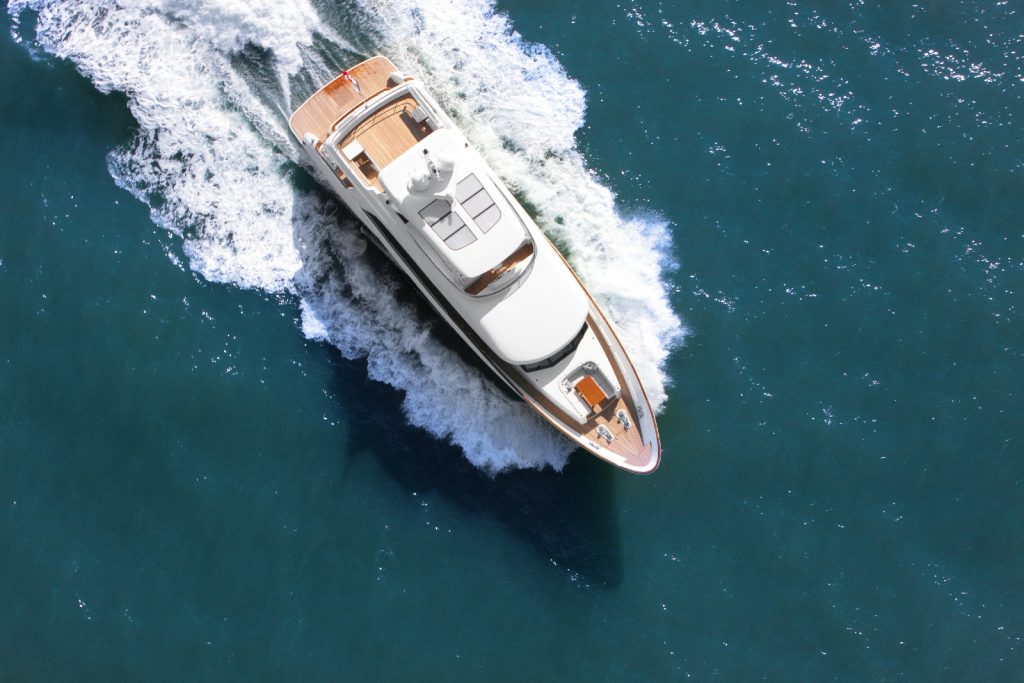
About West Nautical
West Nautical sell, charter and manage superyachts from their head office in Newcastle upon Tyne. The business currently employs a team of 21 staff throughout their offices based in the UK, Russia, France and Cyprus.
Since their inception over 25 years ago, West Nautical have become recognised as one of the most respected, trusted, knowledgeable and accountable professional services firms in yachting – largely due to their relentless determination to act in our clients’ best interests. Their approach and attitude is transparent, refreshing and focused on providing value-added services delivered simply, elegantly and affordably.
Visit West Nautical’s website here: https://westnautical.com
For Media enquiries please contact [email protected]
To keep up to date with the latest Superyacht Content News, click here .
Sign up to our Newsletter below:
Newsletter Signup
- Your Name First Last
- Your Email *

IMAGES
VIDEO
COMMENTS
The next step is to enter the speed, fuel consumption and cost of fuel per litre to determine the cost of the trip. Here is an example: A fast 30m yacht cruising at 20 knots will consume roughly 400 - 500 litres depending on the engine type. This would equate to the total consumption of 2500 litres for a distance of 100 nautical miles.
Well, almost. During recent sea trials, Najiba reportedly delivered a truly astonishing fuel consumption best of just three gallons per nautical mile at its 12-knot cruising speed. That's ...
The price of filling a superyacht with fuel depends on various factors, such as the vessel's size and fuel tank capacity. An average 70-meter superyacht utilizing 500 liters of fuel an hour may have fuel costs around $400,000 a year, though these costs will increase significantly for larger vessels. 'Northern Sun' Superyacht (credit ...
By looking at several price points of marinas, we get the following: Average diesel prices range from $3.2-$3.9 per gallon. Average petrol prices range from $7.2-$7.8 per gallon. Note that discounts usually apply whenever you choose to purchase large quantities of fuel.
Fuel - The captain or engineer should be able to provide the fuel consumption per hour at any given speed, so if a yacht owner knows roughly how much he wants the boat to travel, then he can estimate the total fuel consumption and budget the fuel cost. There is also the fuel cost for generators, particularly at anchor.
The next step is to enter the speed, fuel consumption and cost of fuel per litre to determine the cost of the trip. Here is an example: A fast 30m yacht cruising at 20 knots will consume roughly 400 - 500 litres depending on the engine type, this would equate to the total consumption of 2500 litres for a distance of 100 nautical miles.
Fuel: ~ $472,000. If you think everyday fuel prices for your automobile are expensive than you might want to turn away now. Using around 400 litres of fuel an hour, a 100-foot superyacht is going to set you back another half a million to make sure you don't run out of gas in the middle of the ocean if in use for the majority of the year.
Superyacht fuel: The transition to a sustainable future. From the beginning of yachting, one constant factor over the decades has been the use of the internal combustion engine, using a form of gasoil (or diesel) as its fuel. There have been some exceptions, like the use of gas turbines, but 99.9% of the current fleet are using diesel as their ...
The efficiency of boat fuel is measured in pounds of fuel that are used in an hour per horsepower. In order to be able to read the calculation right, any boat owner should know that gasoline is almost 6.1 pounds per gallon while diesel is 7.2 pounds per gallon. Usually, if you consider that all sea conditions are pristine, the fuel consumption ...
Let's look at some actual numbers from a full-displacement trawler in the 40- to 50-foot range: 7.5 knots @ 3 GPH = 2.5 nMPG. If we push for a little more speed the fuel burn changes: 9 knots @ 11 GPH = 0.8 nMPG. Notice that by slowing down 1.5 knots, this boat increases its fuel economy almost 300%.
The Greenline Hybrid yacht line is currently available in eight different models, including the sleek NEO sports boat, the family cabin cruising 33, 39 and 40, and the 45 Fly, 48 Fly, 48 Coupe and the 65 OC. All of these models achieve industry leading fuel efficiency. Greenline 40 Hybrid Diesel-Electric Solar Power Boat.
table. The next step is to enter the speed, fuel consumption and cost of fuel per litre to determine the cost of the trip. Here is an example: A fast 30m yacht cruising at 20 knots will consume roughly 400 - 500 litres depending on the engine type. This would equate to the total consumption of 2500 litres for a distance of 100 nautical miles.
Then enter the speed, fuel consumption, and fuel cost to determine the total cost of the trip. Example 1: A fast 30m yacht cruising at 20 knots ( Lady Amanda) will consume roughly 400-500 l/hour (more depending on engine type). Exampe 2: A typical displacement yacht may cruise at 12 knots and consume 300 l/hour.
Now, let's explore more about yacht fuel consumption. Regular check-ups help identify issues affecting fuel efficiency. Energy-saving practices such as LED lighting, natural light, and air conditioning can reduce overall energy demands. Utilizing sails and wind power during optimal conditions reduces reliance on engines and conserves fuel.
The fuel consumption formula. What we are looking for is the expense of fuel we will have during our cruise. Now that we have all the information we need for the yacht fuel calculation, and so: Total nautical miles; Engine consumption; Cruising speed; The market price of gas; We can proceed with the real boat fuel calculator using our formula.
As a result, the number of passengers on board at any one time will impact the overall fuel consumption. So which Superyacht fuel is the most sustainable? The most sustainable fuel is Green D+ HVO fuel which is renewable, biodegradable, and made from renewable raw materials. We are now seeing more inquiries for Green D+ HVO with the increased ...
The price of fuel can vary because of the market price, but it can also depend on whether the yacht is a private or a commercial one. Duty-free diesel is much less expensive, but it is subject to many regulations to be used. Within the price, there are also other costs, such as port taxes, which can vary from 1 cent per liter to 5 cents per liter.
The sheer amount of fuel required to operate superyachts can be hard to believe. Consider a superyacht measuring around 70 meters in length with a diesel engine. Such a vessel can use around 500 liters of diesel per hour just to keep the engines running, without the superyacht actually being on the move. This fuel consumption will increase when ...
In typical and relatively calm conditions, a 300-horsepower diesel engine would burn 16.6 gallons of diesel fuel per hour with variance based on the previously stated factors. You would then combine this fuel consumption per hour with the number of nautical miles to be traveled and the expected travel time to calculate your yacht fuel cost.
Here are some examples of fuel consumption: 1: A fast 30m yacht cruising at 20 knots (Lady Amanda) will consume roughly 400-500 l/hour. 2: A typical displacement yacht may cruise at 12 knots and consume 300 l/hour. 3: Some yachts can cruise at 10 knots (Firefly) and consume 100 l/hour. Fuel prices can fluctuate, but typically fuel when cruising ...
When someone asks you about the fuel consumption of a passenger car the issue is so common that the answer comes to you. A small and very economical one consumes 5l/100 km, a larger one 7.5l and a very large SUV 10-12l. To the question of how much a yacht consumes, that is, what is the fuel consumption of a yacht, the answer is more complicated.
The fuel consumption of a super yacht is a significant consideration for those who enjoy the luxury and adventure of sailing the open seas. With engines running, an average 70-meter luxury yacht will consume approximately 130 gallons of fuel per hour. However, this figure escalates considerably when the yacht is in motion.
The next step is to enter the speed, fuel consumption and cost of fuel per litre to determine the cost of the trip. Here is an example: A fast 30m yacht cruising at 20 knots will consume roughly 400 - 500 litres depending on the engine type. This would equate to the total consumption of 2500 litres for a distance of 100 nautical miles.
As it sailed the Indian, Pacific, and Atlantic Oceans from August 2023 through February 2024, Pyxis Ocean saved an average of 3.3 tons (3 tonnes) of fuel daily, or 14% of the ship's typical fuel ...